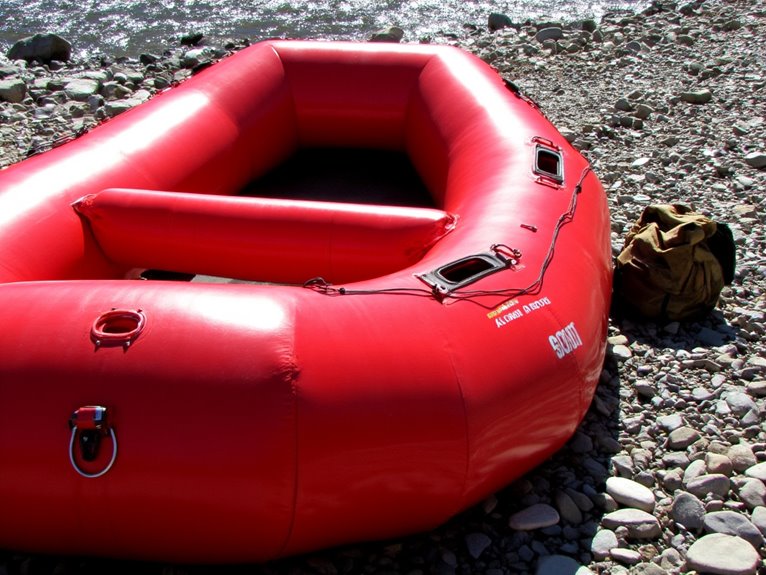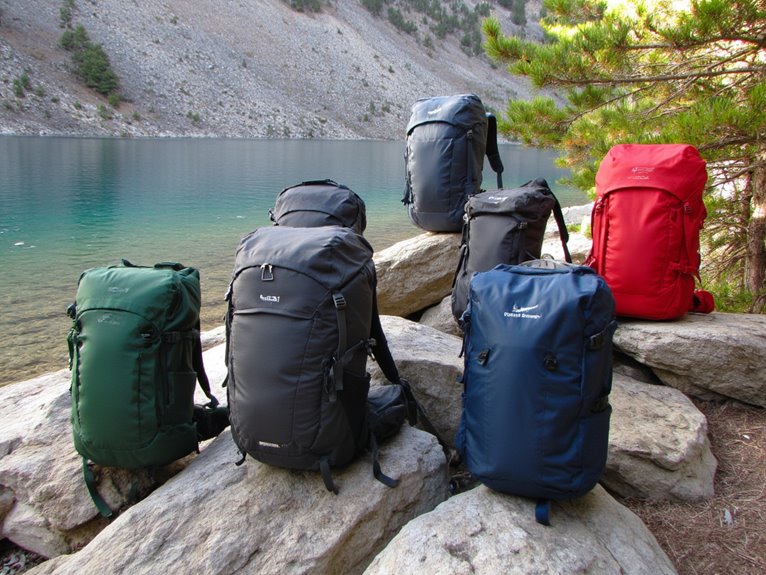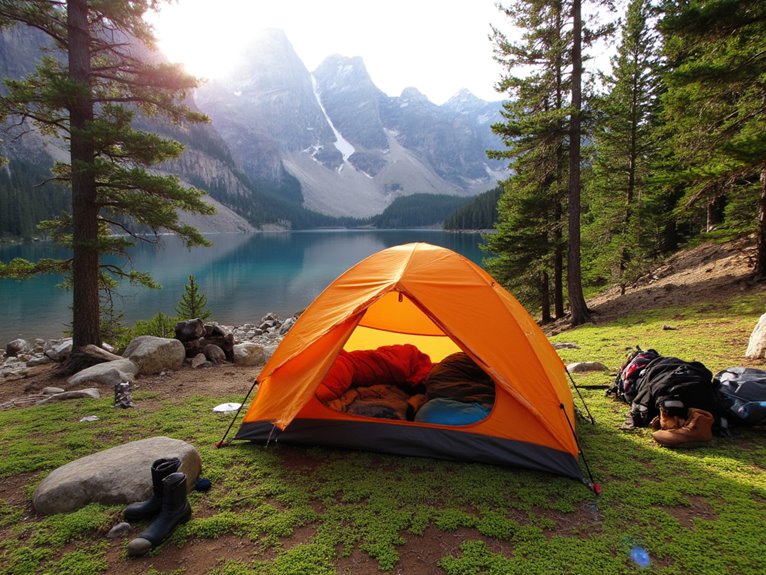How Much Water Do I Need for a 4 Hour Bike Ride?
For a 4-hour bike ride, it's essential to tailor your hydration strategy to your individual needs. Consider factors such as sweat rate, body composition, climate, and humidity to determine ideal fluid intake. Aim to consume 17-20 ounces of water for every pound of body weight lost during exercise. Adjust your hydration plan based on climate and humidity, as riders may lose up to 2 liters of water per hour in extreme temperatures. By understanding your unique hydration needs, you'll be equipped to maintain peak performance and prevent dehydration. Further, learn how to fine-tune your hydration strategy to maximize your performance.
We are supported by our audience. When you purchase through links on our site, we may earn an affiliate commission, at no extra cost for you. Learn more. Last update on 8th January 2026 / Images from Amazon Product Advertising API.
Calculating Your Sweat Rate
To determine your individual hydration needs for a 4-hour bike ride, it's essential to calculate your sweat rate, which is the amount of fluid lost through sweating during a given period of exercise.
This calculation will help you tailor your hydration plan to your specific needs.
To calculate your sweat rate, weigh yourself naked before and after a 60-minute bike ride in similar conditions to your planned 4-hour ride.
The weight difference represents the amount of fluid lost through sweating.
Record the amount of fluid consumed during the ride as well.
The difference between pre- and post-ride weights, minus the amount of fluid consumed, equals your sweat rate in milliliters per hour.
This value will guide your hydration strategy for the 4-hour bike ride.
Factors Affecting Hydration Needs
Several factors, including temperature, humidity, and individual tolerance, greatly impact hydration needs, making it vital to take into account these variables when planning your hydration strategy for a 4-hour bike ride.
To accurately determine your hydration needs, consider the following key factors:
Fitness level: More experienced riders may require less hydration due to increased efficiency in thermoregulation.
Body composition: Riders with a higher percentage of body fat may require more hydration due to increased sweat rates.
Medications and medical conditions: Certain medications or medical conditions, such as diabetes, may affect hydration needs.
Climate and Humidity Effects
Climate and humidity substantially influence hydration needs, as riders may lose more water through sweating in hot and humid environments.
In extreme temperatures above 85°F (30°C), riders may lose up to 2 liters of water per hour.
Additionally, high humidity can exacerbate fluid loss, as the body's ability to cool itself through sweating is impaired.
Riders should adjust their hydration strategy accordingly, consuming more water and electrolyte-rich drinks to compensate for increased fluid loss.
In hot and humid conditions, it's essential to prioritize hydration to avoid dehydration and heat-related illnesses.
Body Weight and Hydration
In terms of body weight and hydration, understanding individual needs is vital.
Research suggests that ideal hydration levels vary depending on body weight, with larger riders requiring more fluid intake to stay properly hydrated.
As we delve into the relationship between body weight and hydration, we'll examine the importance of daily fluid intake and how it impacts performance during a 4-hour bike ride.
Ideal Hydration Levels
Determining ideal hydration levels requires considering individual body weight, as a general guideline is to drink at least 17-20 ounces of water for every pound of body weight lost during exercise. This guarantees that you're replenishing lost fluids and electrolytes.
To calculate your ideal hydration level, follow these steps:
Weigh yourself before and after exercise to determine how much water weight you've lost.
Multiply the weight lost by 17-20 ounces to determine your hydration needs.
Divide the total amount by the duration of your ride to determine how much to drink at each hydration break.
Water Needs Vary
Body weight substantially influences individual hydration needs, as a heavier rider will require more water intake to replenish lost fluids and electrolytes during a 4-hour bike ride.
This is because a larger body mass correlates with a greater sweat rate, resulting in higher fluid losses.
As a general guideline, a 10-kg (22-pound) difference in body weight can translate to an additional 100-200 mL of water intake per hour.
For example, a 70-kg (154-pound) rider may require 500-750 mL per hour, while an 80-kg (176-pound) rider may need 600-850 mL per hour.
Understanding the impact of body weight on hydration needs is vital for peak performance and avoiding dehydration during prolonged cycling events.
Daily Fluid Intake
Adequate daily fluid intake is critical for cyclists, as it sets the foundation for ideal hydration and helps mitigate the risks of dehydration, particularly for riders with higher body weights who require more water intake per hour.
A general guideline is to consume at least 8-10 cups (64-80 ounces) of fluid daily. However, individual needs may vary depending on factors such as climate, activity level, and body composition.
Body weight: Aim to drink at least half an ounce of fluid per pound of body weight daily.
Activity level: Increase fluid intake based on the intensity and duration of your rides.
Climate: Adjust fluid intake according to the temperature and humidity of your riding environment.
Pre-Ride Hydration Strategies
Proper pre-ride hydration begins with a deliberate and consistent morning routine, allowing cyclists to establish a hydration foundation that will support their performance during the upcoming 4-hour bike ride.
Aim to consume 16-20 ounces of water 1-2 hours before the ride to allow for proper absorption.
Additionally, incorporate a hydrating snack or meal containing electrolytes, such as bananas or sports drinks, to replenish lost salts.
Avoid caffeine and sugary drinks that can exacerbate dehydration.
Monitor urine color to verify it's pale yellow or clear, indicating adequate hydration.
In-Ride Hydration Techniques
During the 4-hour bike ride, cyclists should aim to consume 4-6 ounces of water or a sports drink every 15-20 minutes to maintain peak hydration levels and prevent dehydration. This frequency helps to replenish lost electrolytes and fluids, ensuring optimal performance.
To optimize in-ride hydration, follow these techniques:
- Use a hydration pack or water bottle cage: Easily accessible hydration allows for frequent sips without disrupting your ride.
- Consume electrolyte-rich drinks: Sports drinks or tablets help replenish lost sodium, potassium, and other essential electrolytes.
- Monitor your urine output: If your urine is dark yellow or you're not urinating frequently, it's a sign you need to drink more.
Post-Ride Rehydration Tips
After completing a 4-hour bike ride, rehydration is critical to replenish lost fluids and electrolytes, and a well-planned post-ride hydration strategy is necessary to support the body's recovery process.
Aim to consume 16-20 ounces of fluid for every pound of body weight lost during the ride.
Include electrolyte-rich drinks or snacks to replenish sodium, potassium, and calcium.
Prioritize hydration within 30-60 minutes of finishing the ride, when the body is most receptive to rehydration.
Consider a mix of water, sports drinks, and electrolyte supplements to tailor your rehydration strategy to your individual needs.




